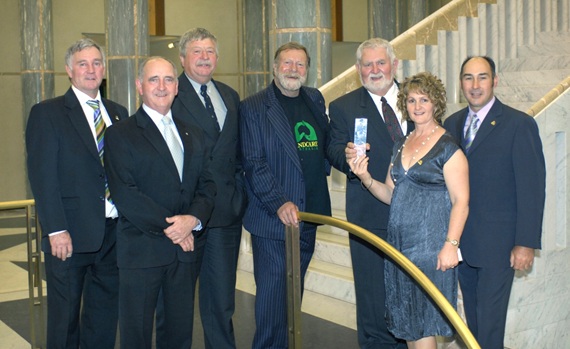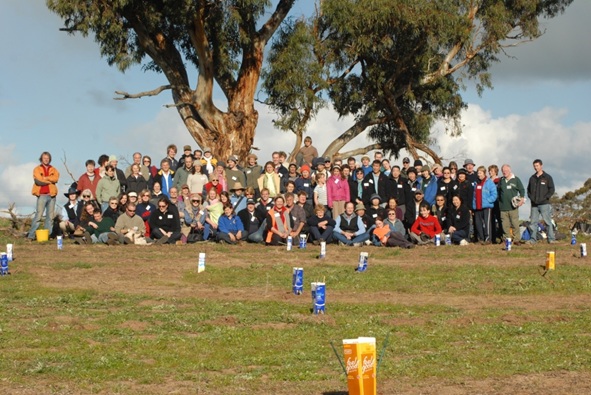Our Story
From this humble beginning, Landcare groups quickly spread throughout Victoria including many around the Hindmarsh Shire. In July 1997, representatives from 16 local groups and organisations combined their efforts and established the Hindmarsh Landcare Network.
The Network now brings local Landcare groups together to improve and protect the natural environment of the West Wimmera and Southern Mallee. It also gives individual Landcare groups and communities a united voice and helps develop local projects, increase investment for environmental action and accelerate the level of work on private land.
HLN has four major areas of interest including:
* Protection of Native Vegetation with particular reference to improved habitat, rare, threatened and endangered species and connecting plant communities.
* Control and management of Pest Plant and Pest Animal species protecting productive land use and natural environment.
* Improved condition of waterways and wetlands, and protection of the surrounding environment.
* Improved landholder uptake and implementation of sustainable agricultural practices.
While the Network has largely focused on native vegetation projects, recent impacts from reduced rainfall and higher temperatures has shifted the emphasis towards sustainable agriculture and systems providing improved economic return. The Network is a starting point to access information, meet others with similar interests and link people with agencies and organisations that can help support community and Network activities and works.
One of the success stories is the Hindmarsh Biolink, also known as Project Hindmarsh, which started from a Wimmera Farm Tree Group survey of roadside vegetation in 1995/96. Since then the project has gained a reputation for community and farmer support and is well recognised at a State and National level within the Natural Resource Management industry.
Links forged between city and country people during the annual Project Hindmarsh Community Landcare Weekend are among the most valuable outcomes to date. They have contributed to significant change and improved understanding of Landcare and a greater interest in the Nhill and wider Hindmarsh Shire area.



The Hindmarsh Landcare Network has strong connections with Melbourne people, largely through the Victorian National Parks Association ( VNPA ). More than 200 volunteers turned up to the first planting weekend in August 1998 which has now become a part of the yearly Landcare volunteer calendar.
In its second year, Project Hindmarsh achieved recognition when HLN won the State Landcare Biodiversity Award and Hindmarsh Shire Council won a Telstra Landcare Local Government Award for its contribution to Landcare. Project Hindmarsh was announced as a community award finalist in the 2007 Banksia Foundation Environmental Awards and in 2008 won the National Landcare CarbonSmart Award for Nature Conservation.
In 2008 the Hindmarsh Landcare Network won the National Landcare CarbonSmart Award for Nature Conservation.
L-R: Cr Michael Gawith (Hindmarsh Shire Mayor), Ron Dodds (Greening Australia), Rob Youl (Landcare Australia), Jack Thompson, Darryl Argall (Hindmarsh Landcare), Karen Wheaton, Brett Wheaton (Hindmarsh Landcare Chairperson)
L-R: Cr Michael Gawith (Hindmarsh Shire Mayor), Ron Dodds (Greening Australia), Rob Youl (Landcare Australia), Jack Thompson, Darryl Argall (Hindmarsh Landcare), Karen Wheaton, Brett Wheaton (Hindmarsh Landcare Chairperson)
Hindmarsh Landcare Network has a collaborative Landcare approach which involves partnerships between the local community, State and Australian Government, local Landcare groups, Greening Australia, Wimmera CMA, Hindmarsh Shire Council, the Victorian National Parks Association and enthusiastic volunteers from diverse regions, including Melbourne. The HLN Annual Planting Weekend, held in mid August, is kindly sponsored by AceRadio and many local businesses.
Network projects go much further than this one weekend a year. In eleven years, this visionary conservation effort has successfully established almost two million locally indigenous trees, shrubs, ground covers and grasses along almost three thousand kilometres of roadsides, effectively creating wildlife corridors (or Biolinks) which now join the Big and Little Deserts. More recently, we have expanded onto private land across the Shire, involving almost three hundred and fifty Hindmarsh landholders and encouraging land management practices that will help the region to sustain agricultural production and manage land for the future.
Hindmarsh Landcare Network involves many farmers and other landholders, many of whom are active in the restoration and rehabilitation of locally indigenous native vegetation species, to enhance biodiversity values and help to protect threatened species. The project aims to improve the sustainability of local agriculture through education and participation in various programs which include salinity control and management of environmental weeds.
The Landcare Network acts as a connection between governments and agencies to the local landholders throughout the Shire which has delivered many on-ground projects. The Network has an active Board made from local people that can help landcare groups find funding and support for activities which they are involved in.

